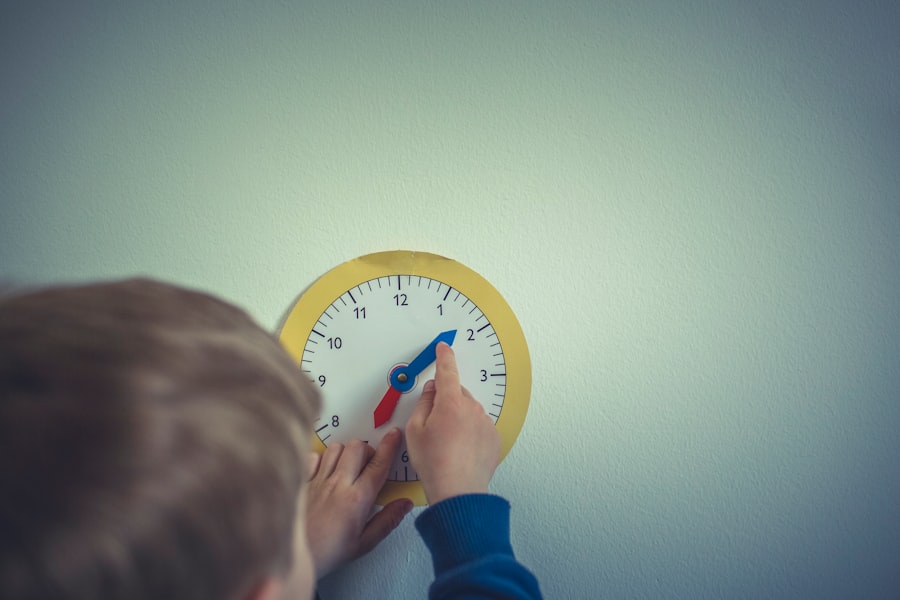Fine motor skills are essential for children’s overall development. They involve using the small muscles of the hands and fingers to perform precise, controlled movements. These skills are important because they enable children to perform everyday tasks such as writing, drawing, manipulating objects and much more. What’s more, they’re closely linked to children’s cognitive development, which means they play a crucial role in their academic learning.
The links between fine motor skills and cognitive development
These skills are essential not only for carrying out everyday tasks, but also for children’s overall cognitive development. Here are some concrete ways in which these skills contribute to brain development and influence academic performance:
- Hand-eye coordination:
- Concrete examples: assembling puzzles, stringing beads, using scissors, drawing shapes.
- Impact: improves the ability to visually follow and guide hand movements, essential for reading and writing.
- Focus and attention:
- Concrete examples: building complex models with blocks, coloring in lines, detailed handicrafts.
- Impact: encourages children to focus on one task at a time, improving attention span and perseverance.
- Problem solving:
- Concrete examples: solving puzzles, building with Lego, following instructions to create something.
- Impact: stimulates logical thinking and the ability to identify, pose and solve problems creatively.
- Memoir:
- Concrete examples: remembering the steps to make origami, memorizing movement sequences in games or activities.
- Impact: enhances procedural memory and the ability to recall information while performing complex tasks.
- Autonomy and self-confidence:
- Concrete examples: performing everyday tasks such as dressing, tying shoes, using cutlery.
- Impact: develops independence and confidence in one’s own abilities, essential for self-esteem and motivation to learn.
- Language and expression:
- Concrete examples: taking part in artistic activities such as drawing or sculpting, which can be used to tell stories or express emotions.
- Impact: Promotes the development of language and communication skills, enabling children to express their ideas and feelings non-verbally.
- Mathematics and logic:
- Concrete examples: using blocks to understand the concepts of size, shape and quantity, or sorting and classifying activities.
- Impact: helps to understand fundamental mathematical concepts and develops logic and the ability to recognize patterns.
Each concrete example illustrates how activities involving fine motor skills can be directly linked to specific aspects of cognitive and academic development, underlining the importance of supporting these skills from an early age.
Fine motor skills for academic learning
There are many of them required for academic learning. Writing, for example, requires precise coordination of finger movements to form letters and words. Drawing also requires precise pencil handling to create shapes and images, and other school activities, such as cutting, gluing and manipulating objects.
Children with poor fine motor skills may have difficulties in these areas. For example, they may have difficulty holding a pencil correctly, making their handwriting illegible. They may also have difficulty cutting or gluing accurately, which can affect their ability to complete art projects or follow instructions in class. These difficulties can lead to frustration and reduced self-confidence in children, which can have a negative impact on their overall academic performance.
Activities to develop fine motor skills in children
Their development is crucial for children, as it affects their ability to perform everyday tasks and their academic performance. Here is a list of activities enriched by concrete examples that can be integrated into children’s routines to stimulate these skills:
- Building sets:
- Use Lego, Duplo or other building systems to create structures according to models or the child’s imagination.
- Assemble puzzles of increasing complexity, from those with large pieces to more detailed puzzles.
- Artistic activities:
- Paint with fingers or brushes of various sizes to help control hand and finger movements.
- Modeling with modelling clay or clay, encouraging the creation of a variety of shapes to develop finger strength and dexterity.
- Cutting and pasting activities:
- Cut out shapes from paper or magazines with age-appropriate scissors, to improve precision and hand-eye coordination.
- Create collages from cut-out shapes, work on themed projects linked to subjects studied in class or the seasons.
- Board games and manipulatives:
- Card games such as Uno or Memory, where you have to sort, stack or deal the cards, to work on fine prehension and strategy.
- Use sets of stringing beads to create patterns or jewelry, requiring precise handling and developing patience.
- Daily tasks and responsibilities:
- Encourage children to take part in adapted household tasks, such as buttoning clothes, zipping up, or setting the table, to integrate fine motor development into everyday activities.
- Gardening or caring for plants indoors, using small tools for planting, watering and caring for plants.
- Educational technology:
- Select educational applications on tablet or smartphone that require precise interactions, such as tracing letters, drawing or solving tactile puzzles.
Tips for integrating activities
- Variety and balance: Make sure you offer a variety of activities to avoid monotony and keep children interested. Balance technological activities with physical activities that require interaction with the real world.
- Daily routine: Integrate fine motor skill development activities into children’s daily routine, dedicating specific times for these activities, while making them fun and engaging. To help you create your own routines, we developed My Dico, your communication and autonomy assistant.
- Encouragement and positive feedback: Encourage children through positive feedback, focusing on the process rather than the finished product, to boost their confidence and motivation.
- Adapting to individual interests and needs: Tailor activities to each child’s specific interests and developmental level to maximize engagement and effectiveness.
By integrating these activities and tips into children’s lives, parents and educators can play a crucial role in developing their fine motor skills, which are essential for their growth and learning.
The impact of fine motor skills disorders on learning
Some children may have fine motor skills disorders, such as dyspraxia or developmental coordination disorder. These disorders can have a significant impact on children’s academic learning. For example, children with dyspraxia may have difficulty coordinating their movements and performing tasks requiring fine motor precision.
It’s important to support these students by adapting activities and tasks to their needs. For example, teachers can provide special writing tools, such as ergonomic grip pens, to help students with such disorders to hold a pencil better. They can also offer alternative activities that allow students to demonstrate their understanding of academic concepts without having to use their fine motor skills.
The benefits of artistic activities for fine motor skills and learning

Artistic activities, such as painting, drawing and sculpting, can be extremely beneficial for the development of fine motor skills in children. These activities require precise handling of artistic tools, enabling children to develop hand-eye coordination and control of finger movements.
What’s more, artistic activities can also improve children’s academic performance. For example, drawing can help develop visual perception and understanding of shapes and proportions. Painting can help develop creativity and self-expression. By integrating these artistic activities into academic learning, teachers can help children develop fine motor skills while reinforcing their understanding of academic concepts.
Tools and resources to improve fine motor skills in students
There are many tools and resources available for teachers and parents who want to improve fine motor skills in children. For example, there are construction games specially designed to develop hand-eye coordination and object manipulation. There are also ergonomic writing tools to help children hold a pencil correctly.
It’s important to use these tools effectively, providing children with clear instructions on how to use them. Teachers can also consult online teaching resources or take part in professional training courses to learn more about best practices for developing fine motor skills in children.
Pedagogical strategies for integrating fine motor skills into academic learning
There are many ways to integrate fine motor skills into lesson plans. For example, teachers can incorporate cutting and pasting activities into art or science lessons. They can also encourage students to use ergonomic writing tools when writing or drawing.
It’s also important to make learning fun and engaging, while developing children’s fine motor skills. For example, teachers can organize games or challenges that require their use, such as building a tower using blocks, or creating a work of art using different artistic techniques.
The impact of technology on fine motor skills and learning
Technology can both help and hinder the development of fine motor skills in children. On the one hand, certain games and applications for tablets or smartphones can help develop hand-eye coordination and object manipulation, as is the case with the Rolling Ball app. However, this is only complementary to the manipulation of real objects .
It’s important to use technology in a balanced and judicious way. Teachers and parents can choose apps or games that encourage the development of fine motor skills, while limiting screen time. There’s the
COCO PENSE and COCO BOUGE, that mandates a sports break every 15 minutes of screen time.

Inclusive educational practices for students with fine motor skills disorders
It is essential to create an inclusive school environment for students with fine motor skills disorders. This means providing extra adaptations and support to meet their specific needs. For example, teachers can provide special writing tools or paper supports to help students hold a pencil better. They can also offer alternative activities that allow students to demonstrate their understanding of academic concepts without having to use their fine motor skills.
It’s also important to make other students aware of these disorders, and to promote inclusion and empathy in the classroom. Teachers can organize discussions on diversity and inclusion, and encourage students to work together and support their peers who are struggling with fine motor skills.
Fine motor skills are essential for children’s overall development and academic learning. They contribute to brain development and have an impact on academic performance. It’s important to provide children with opportunities to improve their fine motor skills through a variety of activities, including artistic ones. Teachers and parents can use specific tools and resources to support the development of fine motor skills in children, while integrating these skills into academic learning in a fun and engaging way. By creating an inclusive environment and providing extra support for students with fine motor skills disorders, we can help all children succeed academically and develop their full potential.
Other articles that might interest you:
No Results Found
The page you requested could not be found. Try refining your search, or use the navigation above to locate the post.



